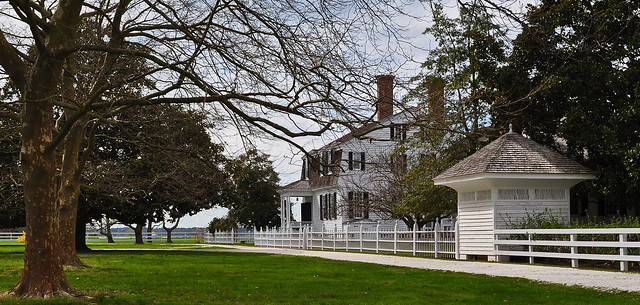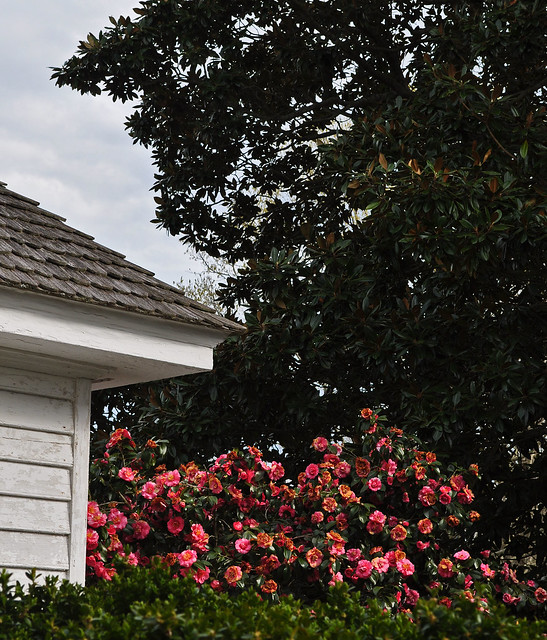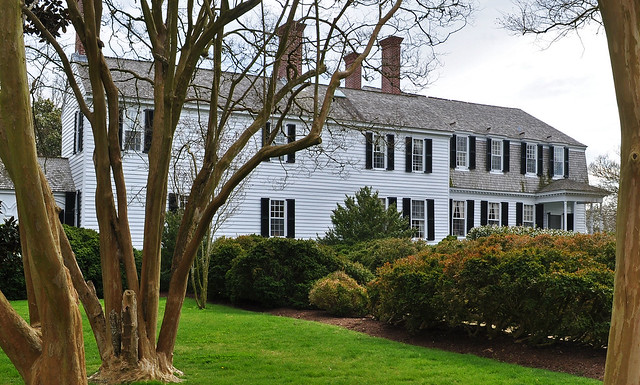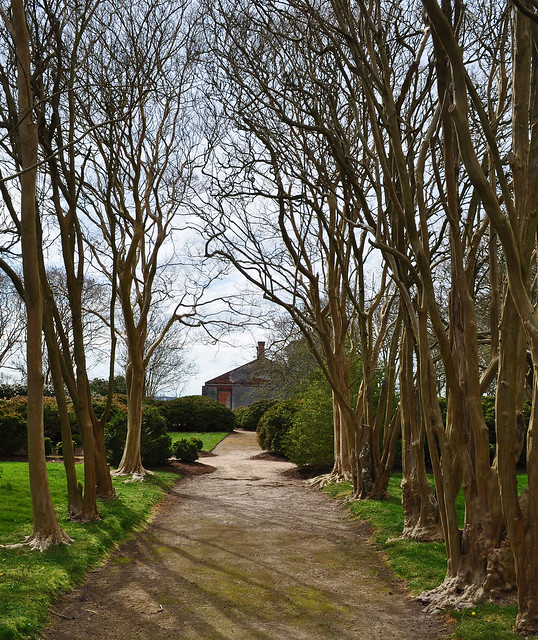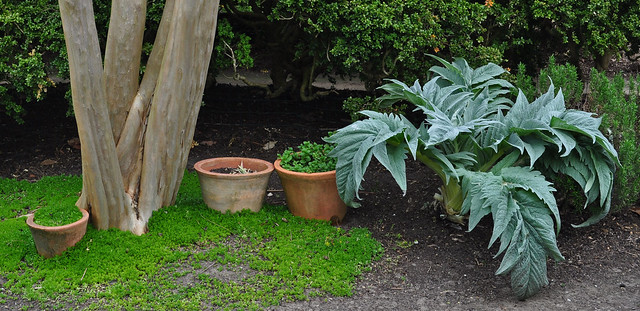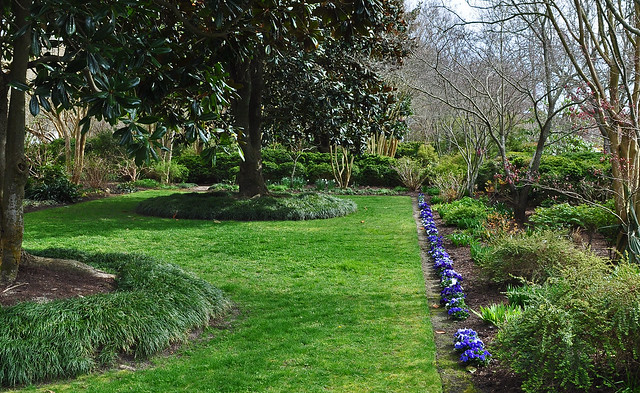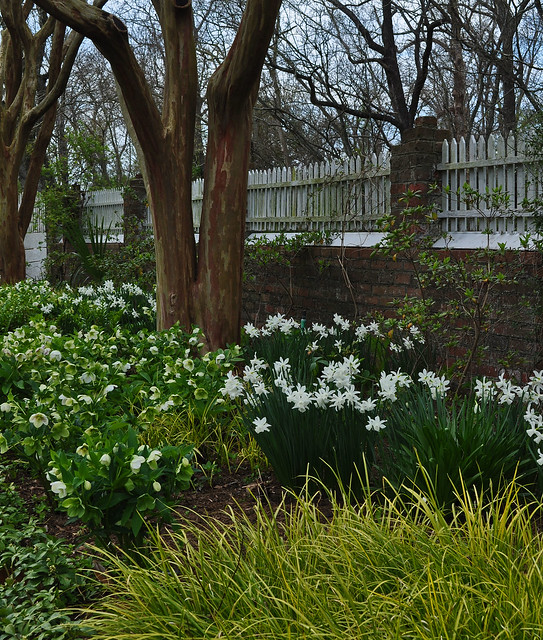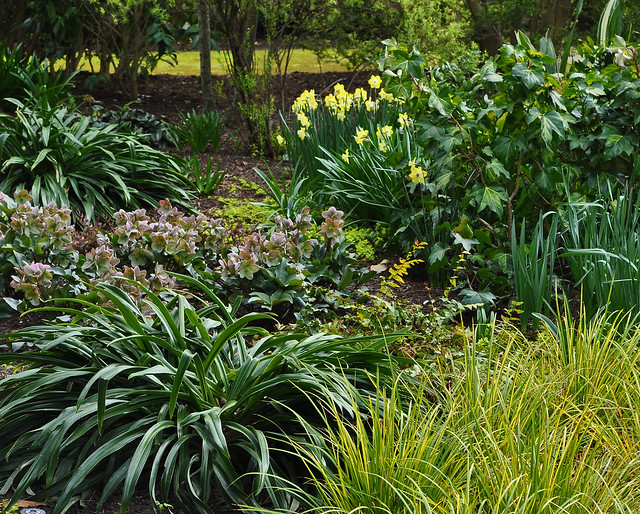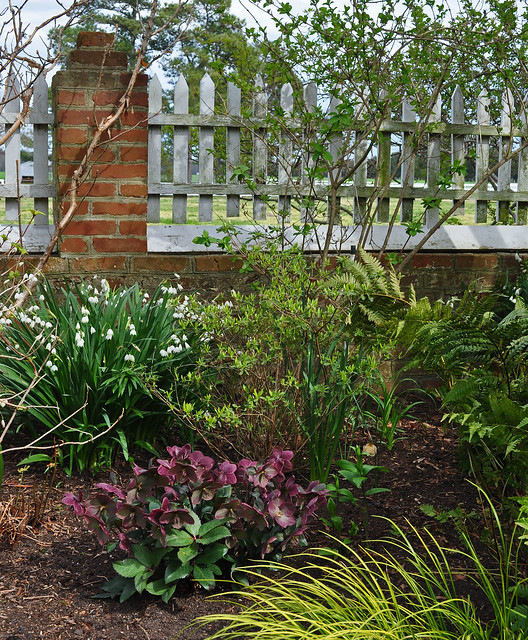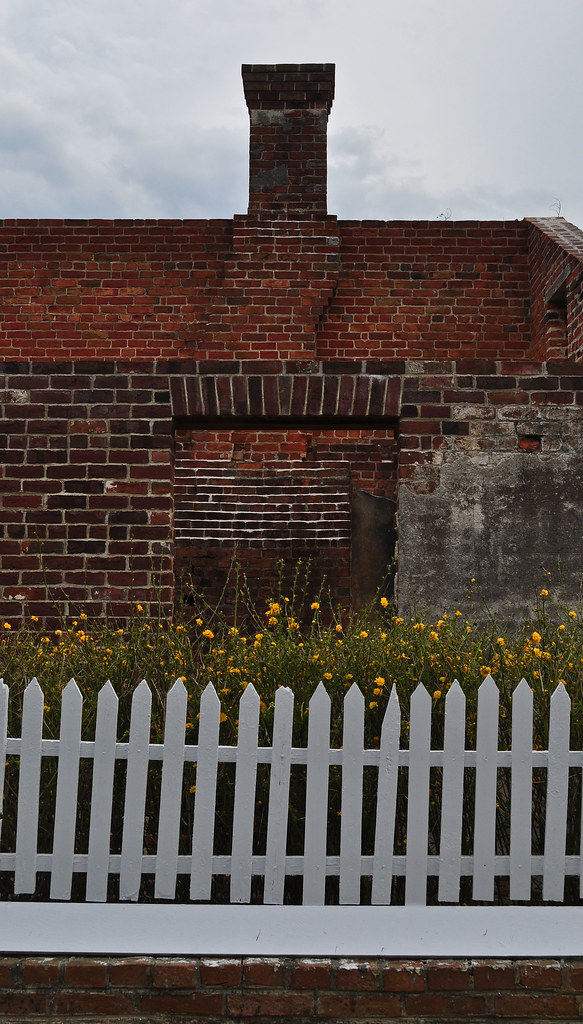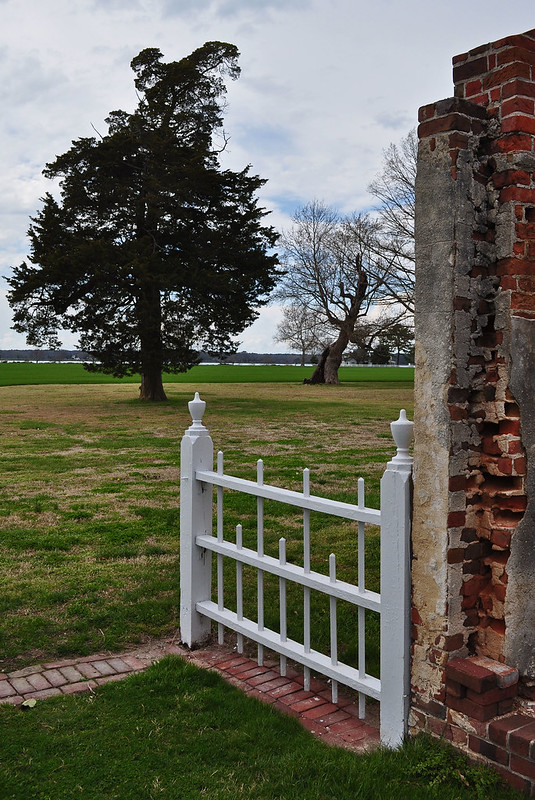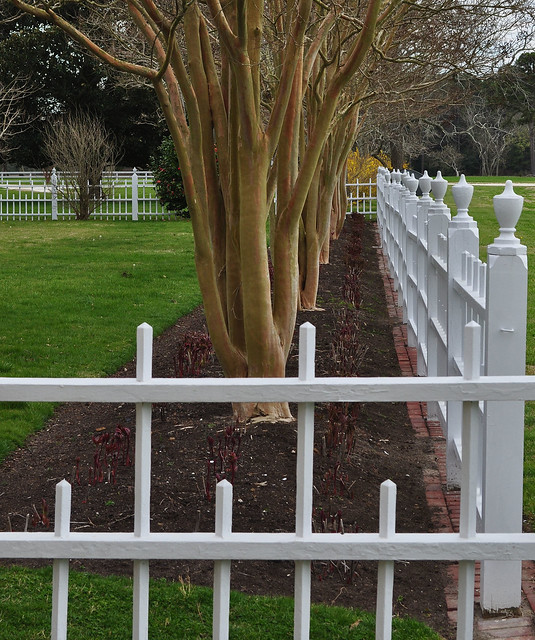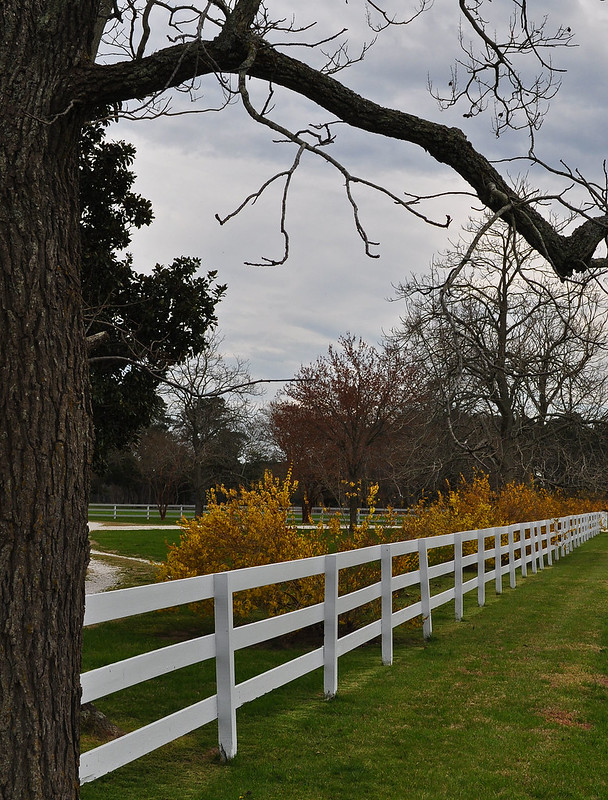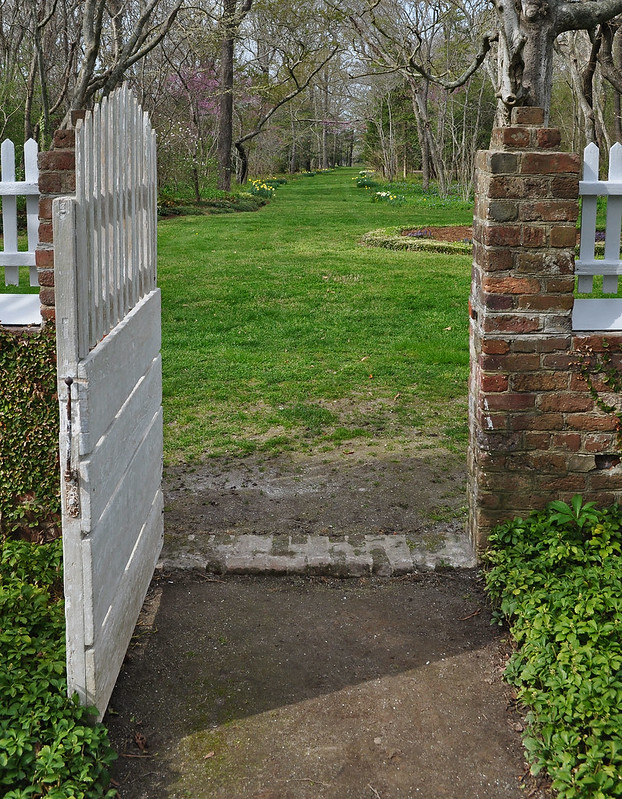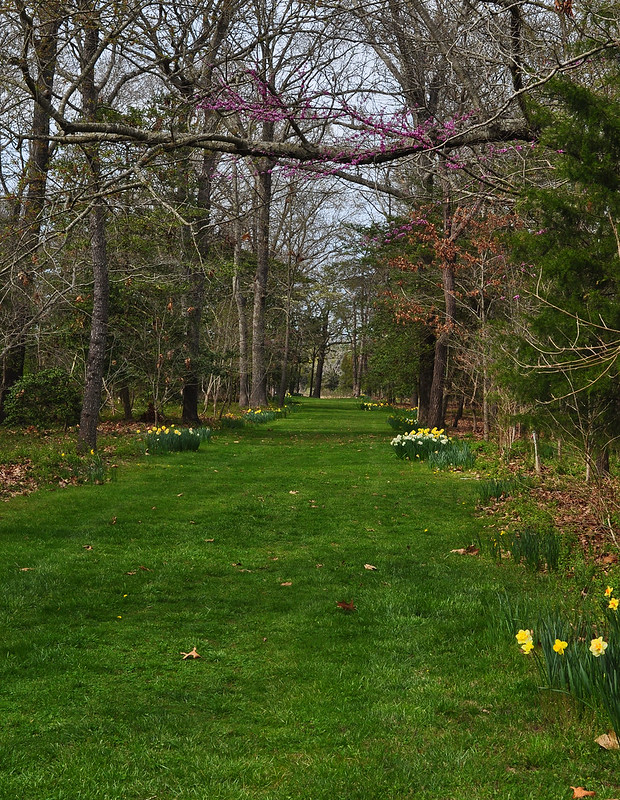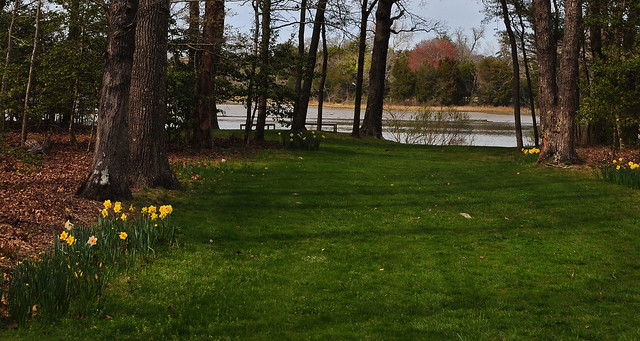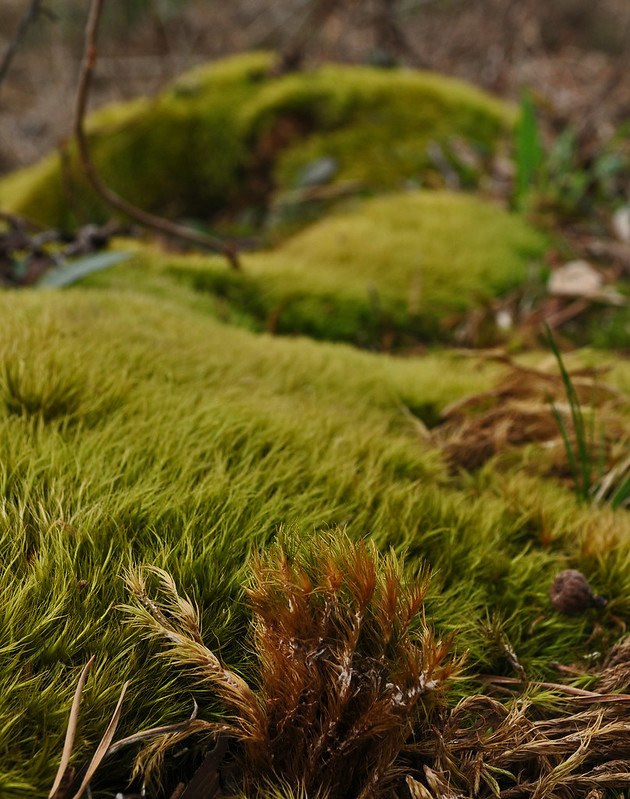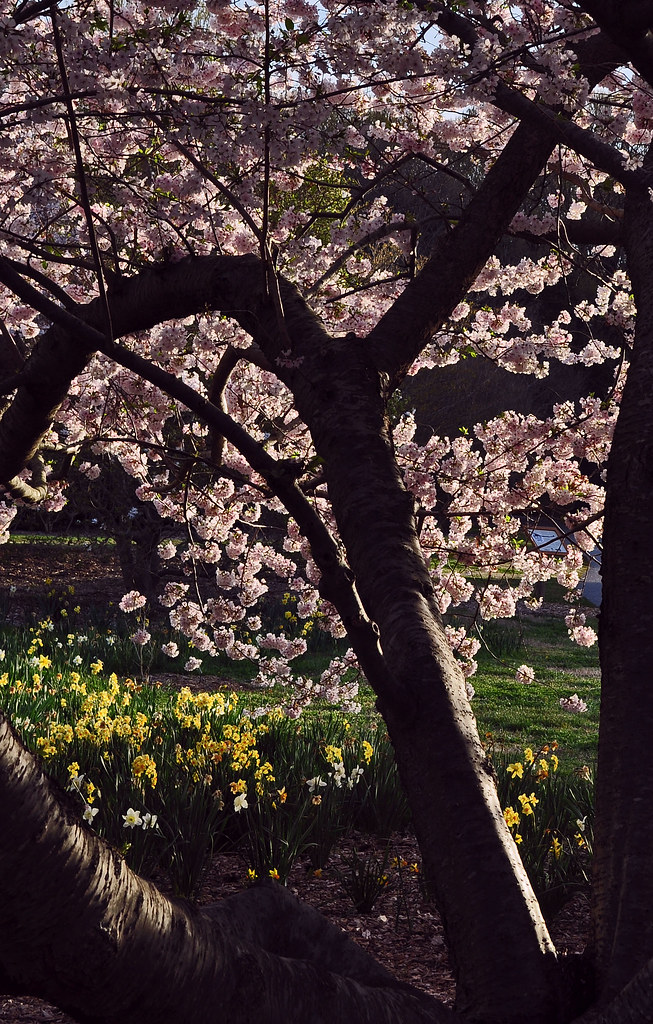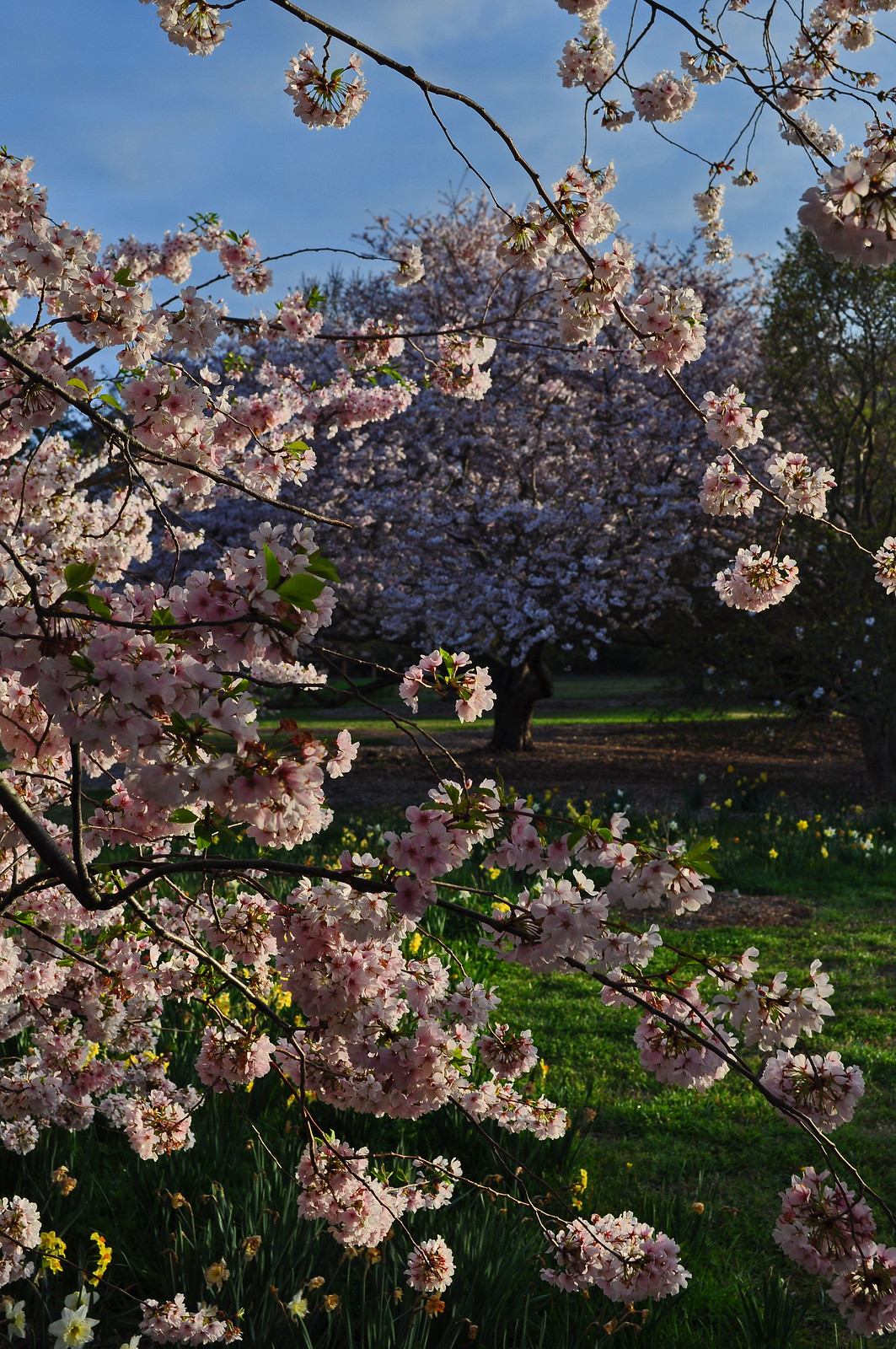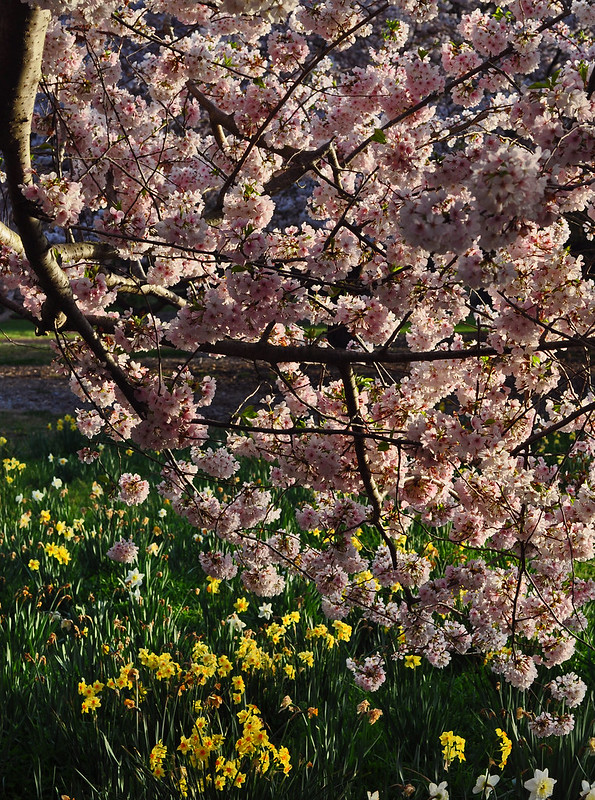Further south, the roads to old plantations were traditionally lined with live oaks, but in Tidewater it is done with eastern red cedar, and there is a about a mile of the trees lining the road to Eyre Hall.
April 4, 2017
Early Spring at Eyre Hall
This past week I crossed the bay to speak to a group of garden club ladies on the Eastern Shore. On the way back to Norfolk I decided to visit the gardens at Eyre Hall, especially since this was one of those rare trips to the Shore when I was unencumbered by either disinterested, impatient family members, or dogs suffering from a loud case of separation anxiety. I have been to the gardens about 4 times now, but never at this time of year. As I mentioned in my first post about Eyre Hall "The first members of the Eyre family settled here beside Cherrystone Creek in the 1660's, and about 100 years later, construction began on what was to become the family seat. Around 1800 a parterre garden was planted behind the house, and it is considered the oldest continually maintained ornamental garden in the state, and one of the oldest in the country. Today Eyre Hall is still occupied by descendants of the same family, and they graciously open the garden to the public without charge, and without appointment."
Further south, the roads to old plantations were traditionally lined with live oaks, but in Tidewater it is done with eastern red cedar, and there is a about a mile of the trees lining the road to Eyre Hall.
By an outbuilding, a large camellia was still in bloom. Overhead in an ancient Magnolia grandiflora a noisy flock of grackles seemed untroubled by my presence.
The garden is a series of large boxwood parterres separated from the surrounding fields by a fence of brick and wood. Inside the parterres, each is planted somewhat differently, but they all smell overwhelming of box. Overhead are more magnolias, and old crapemyrtles. Along one edge of the garden are the ruins of an orangery, and next to it the family cemetery.
The fence pictured in the previous photo and in the following is in the front of the house. Underneath the crapemyrtles are planted nothing but peonies, and the bed is full. I should come back later when they are blooming. Forsythia was finishing up beyond.
The axes (plural of axis - I had to google it) of the parterre garden line up with various windows and doors from the house. One axis goes all the way through the garden, uninterrupted, out the back gate, through a wide daffodil-lined woodland walk, and ends at Eyreville Creek. The woods on either side of the walk start off semi-cultivated and quickly go wild. One area under numerous hackberry trees had been completely overrun with Vinca major. At the waters edge escaped, but well behaved Muscari were blooming near a carpet of moss. Gulls, herons, and egrets created the soundtrack.
Eyre Hall is just off of busy Route 13, but far enough from the main road that you may lose track of time or even what year it is.
Further south, the roads to old plantations were traditionally lined with live oaks, but in Tidewater it is done with eastern red cedar, and there is a about a mile of the trees lining the road to Eyre Hall.
Labels:
Day Trip,
Eastern Shore,
Good Landscaping,
History
April 1, 2017
Subscribe to:
Posts (Atom)

